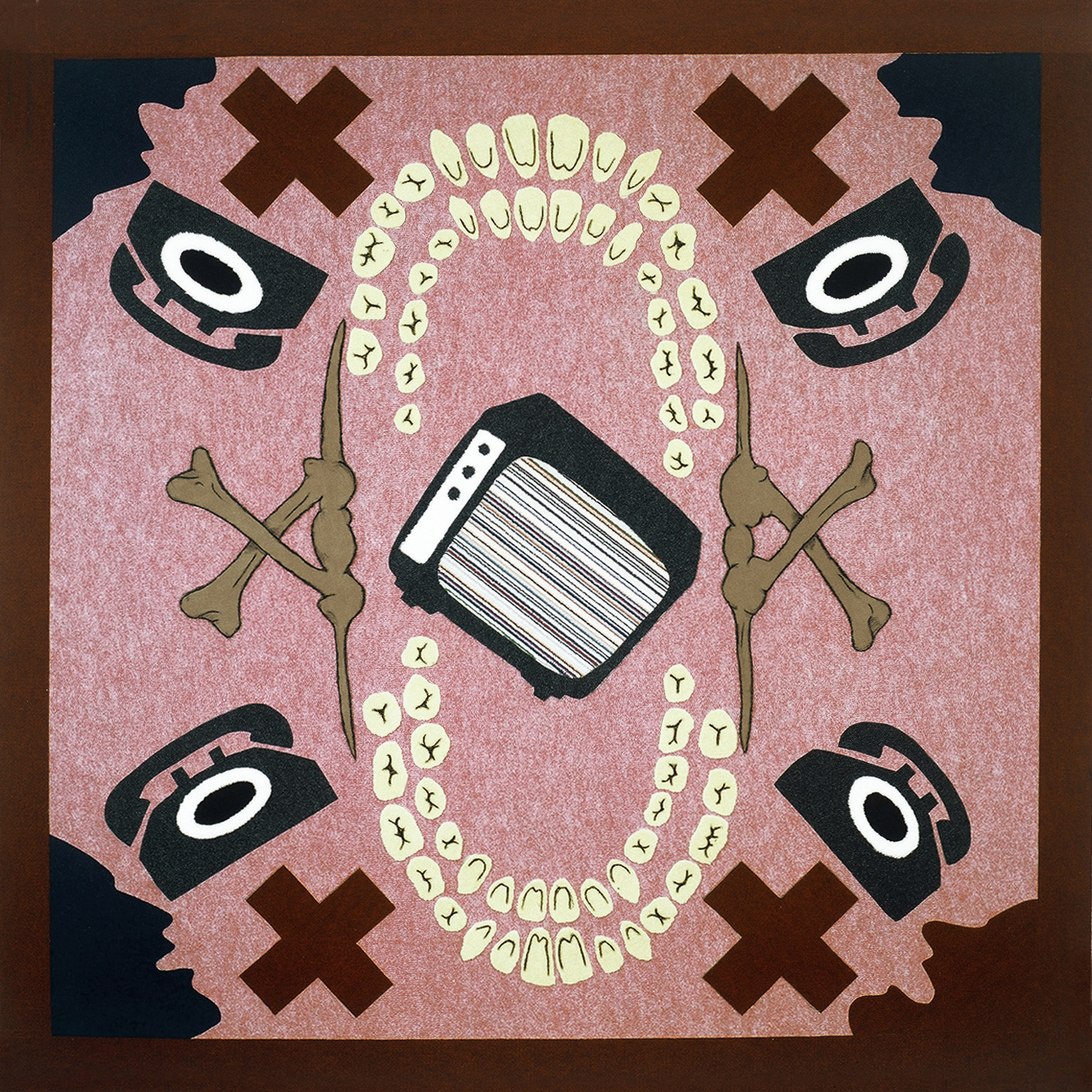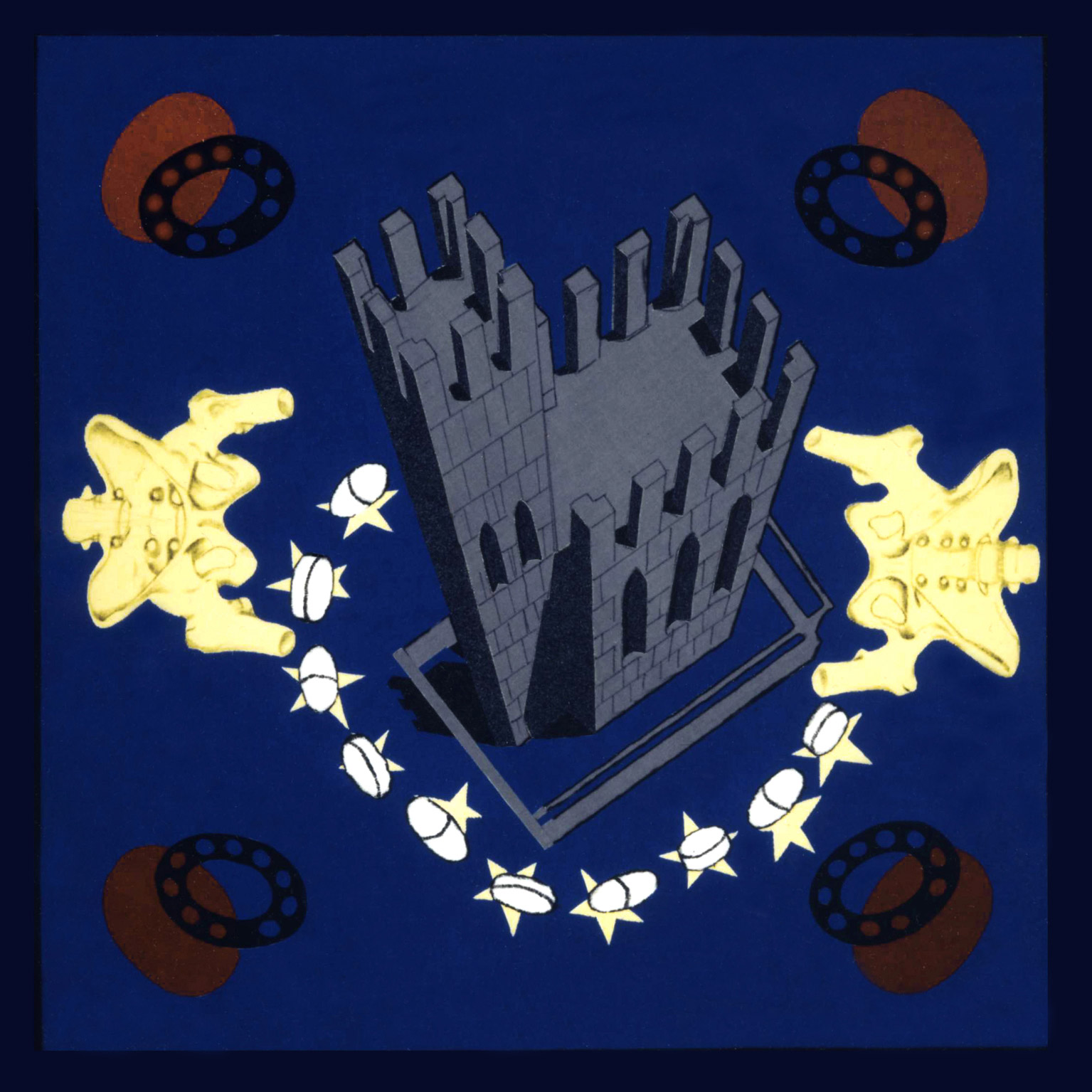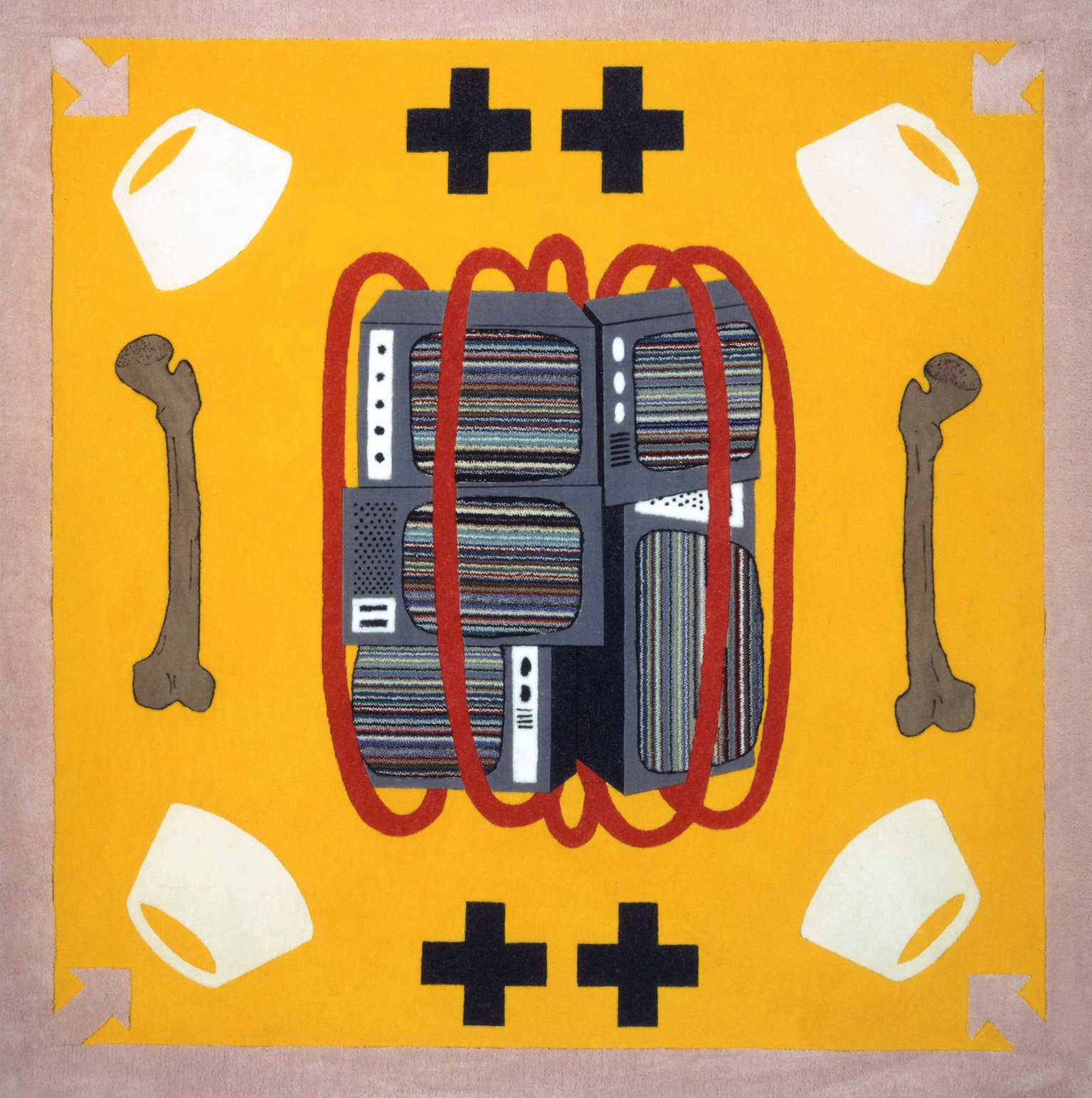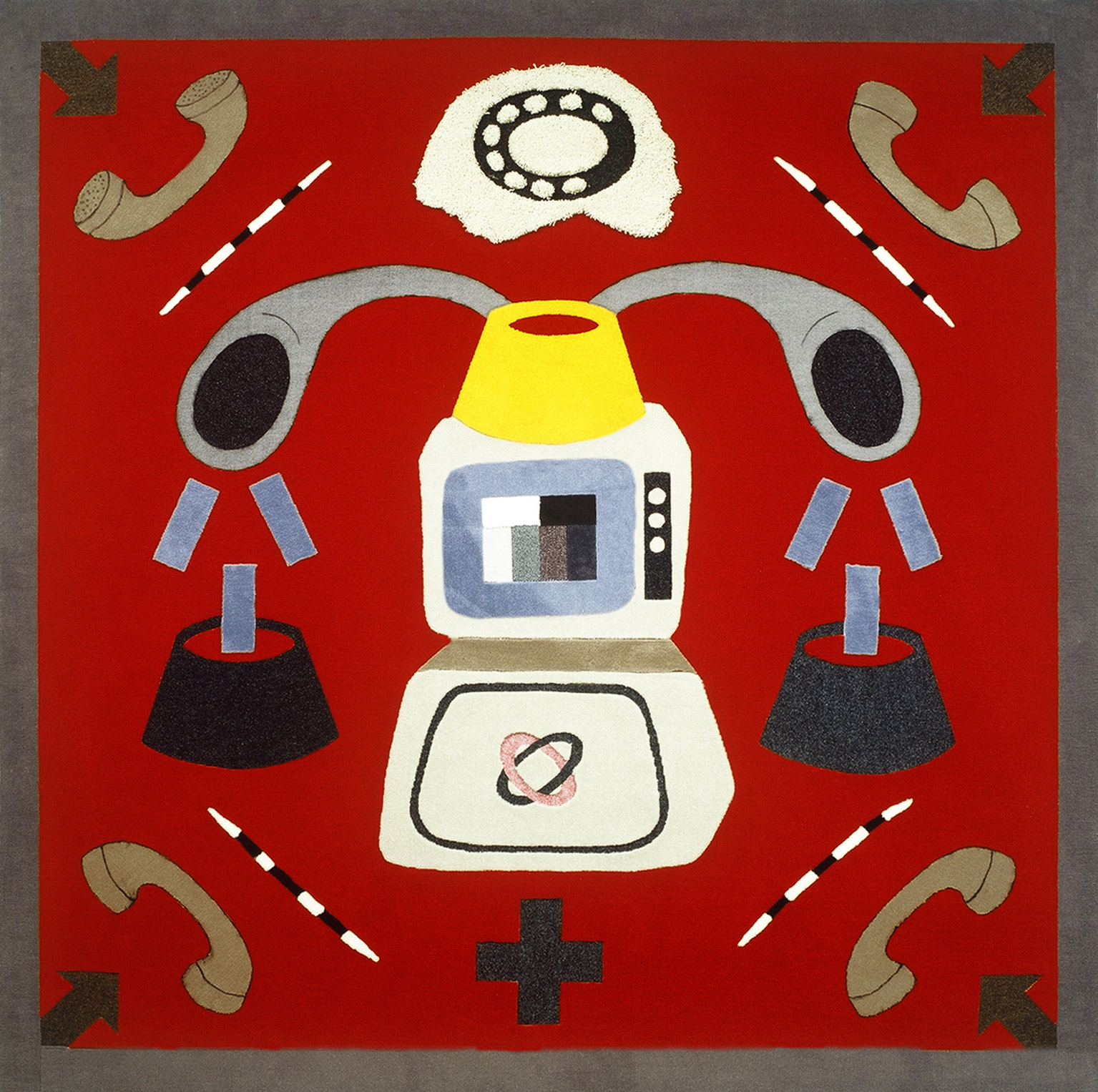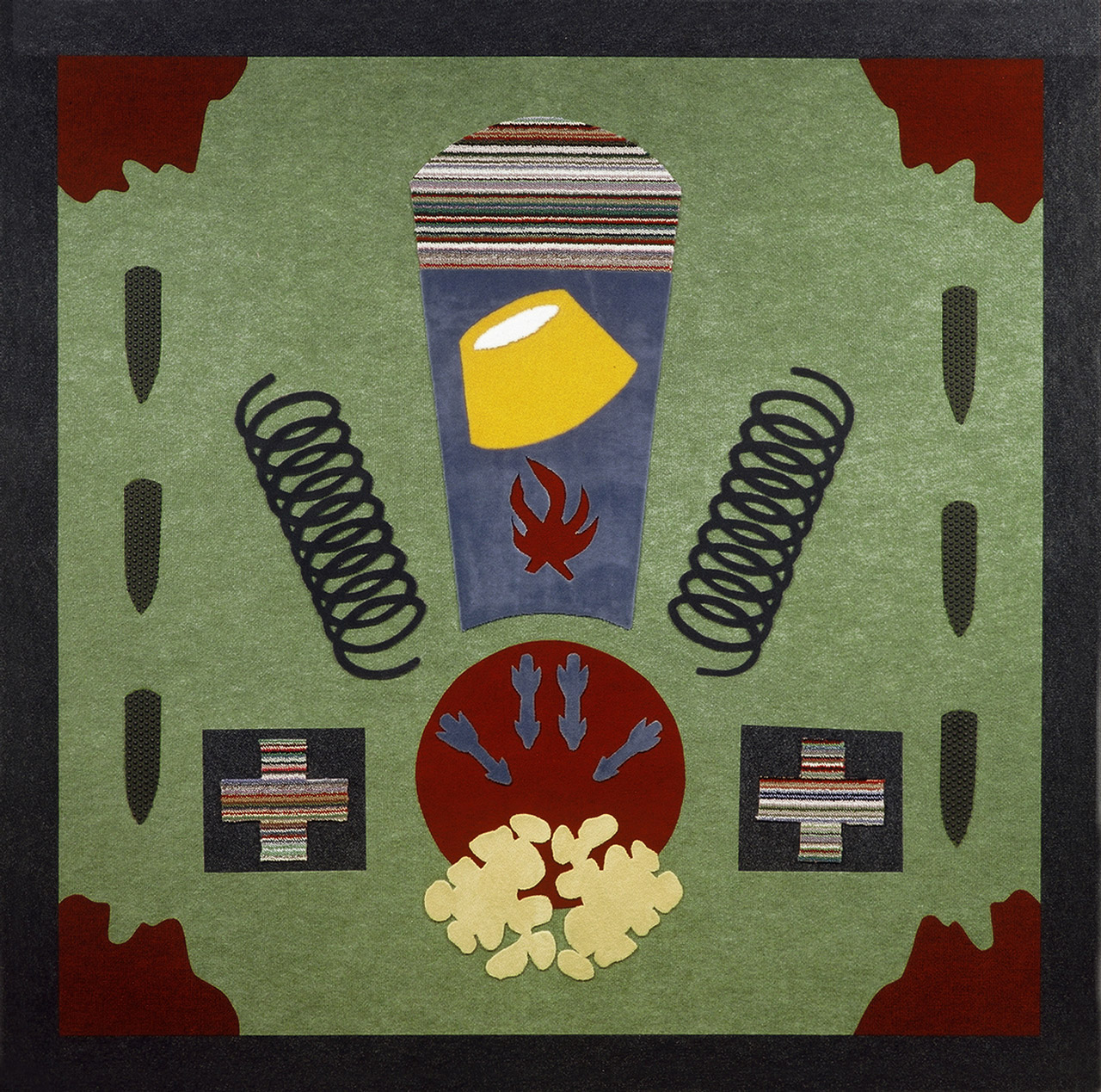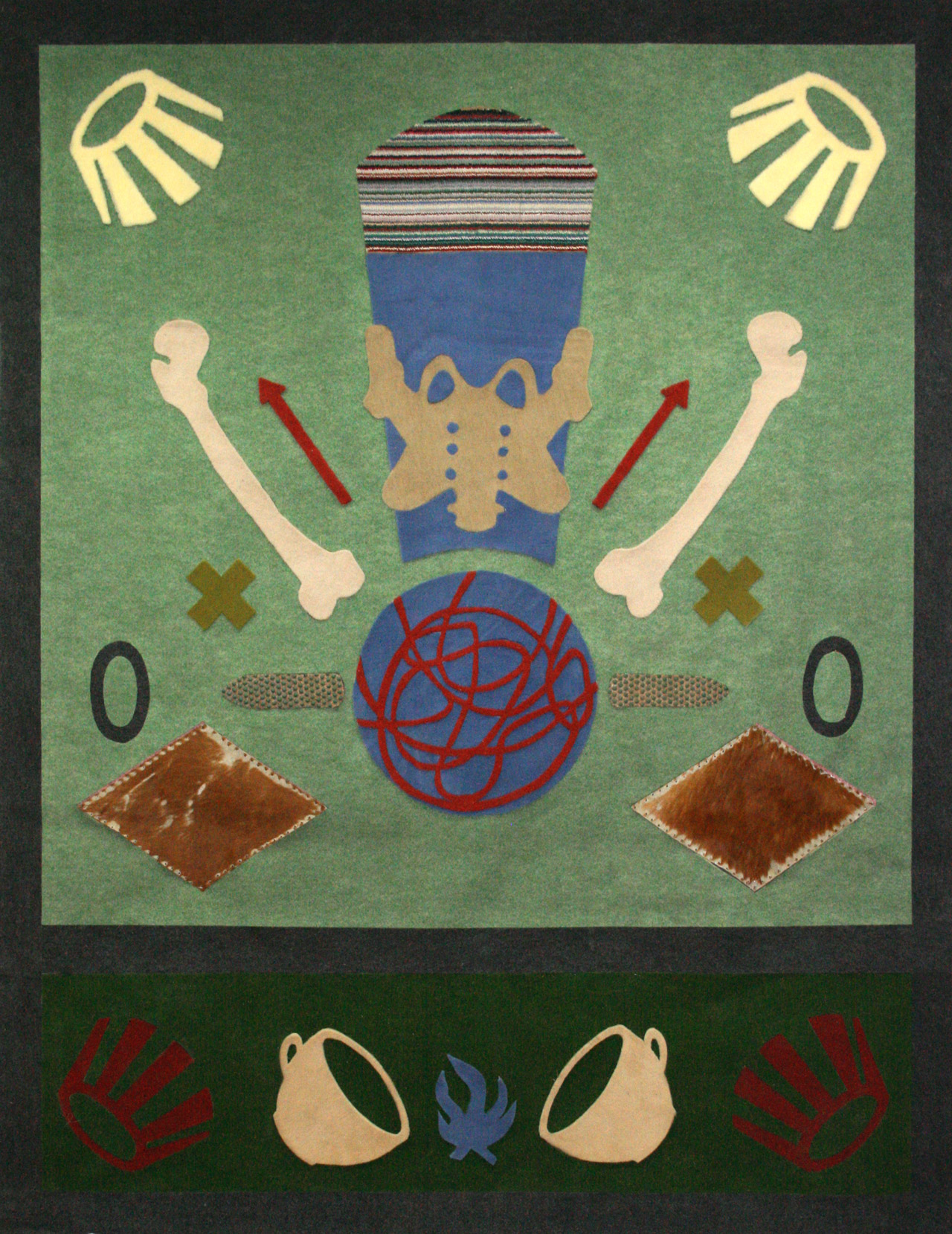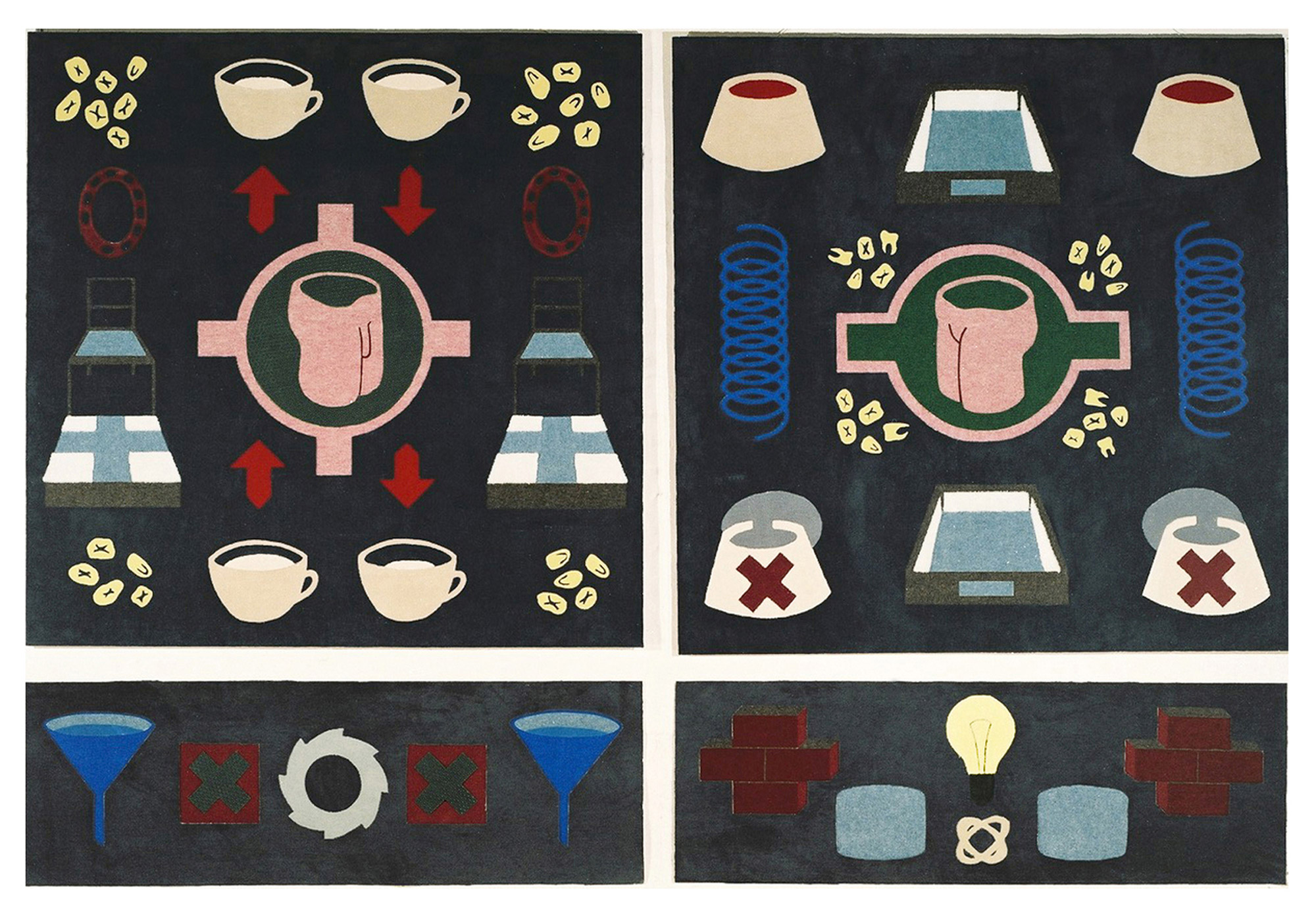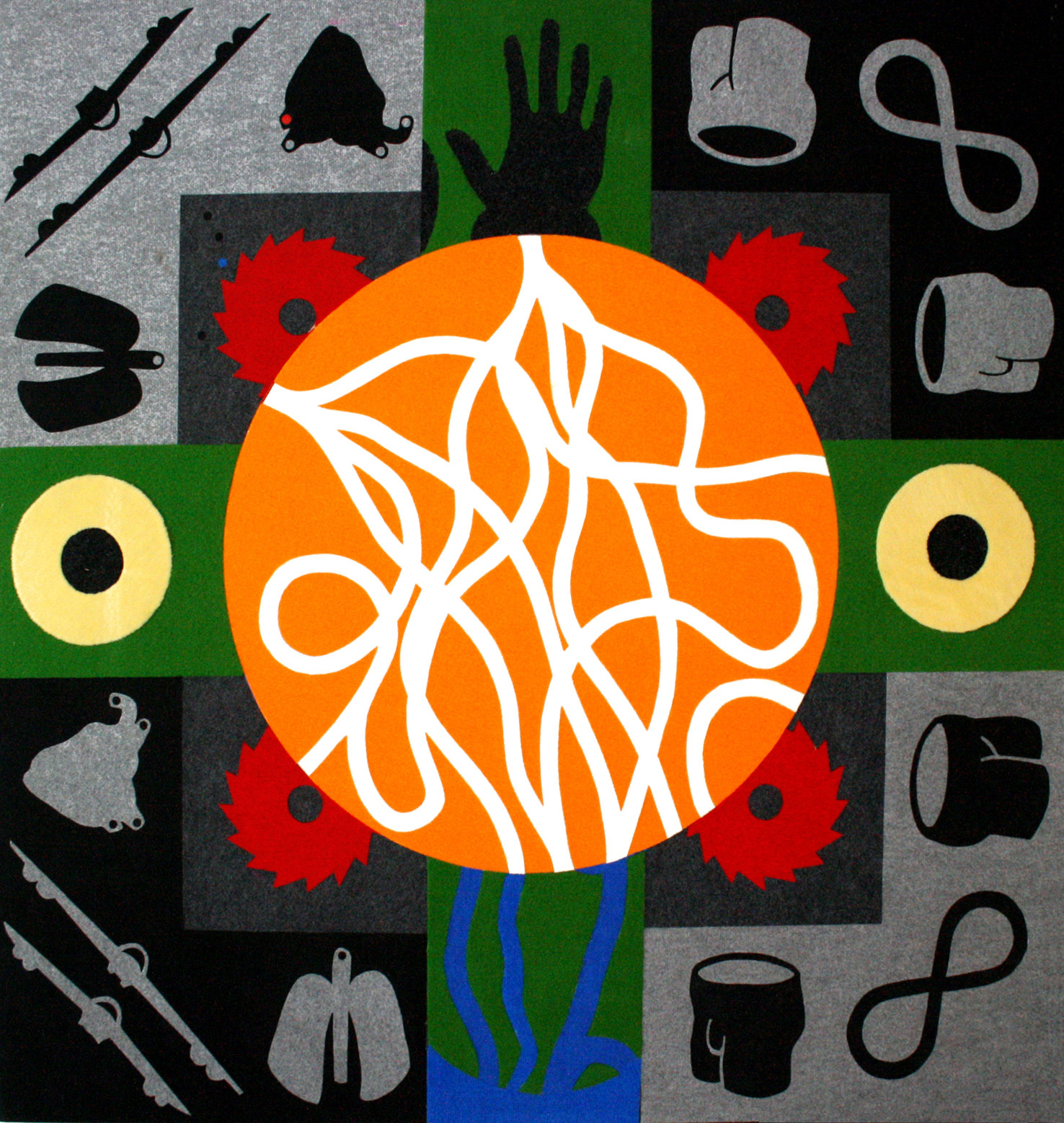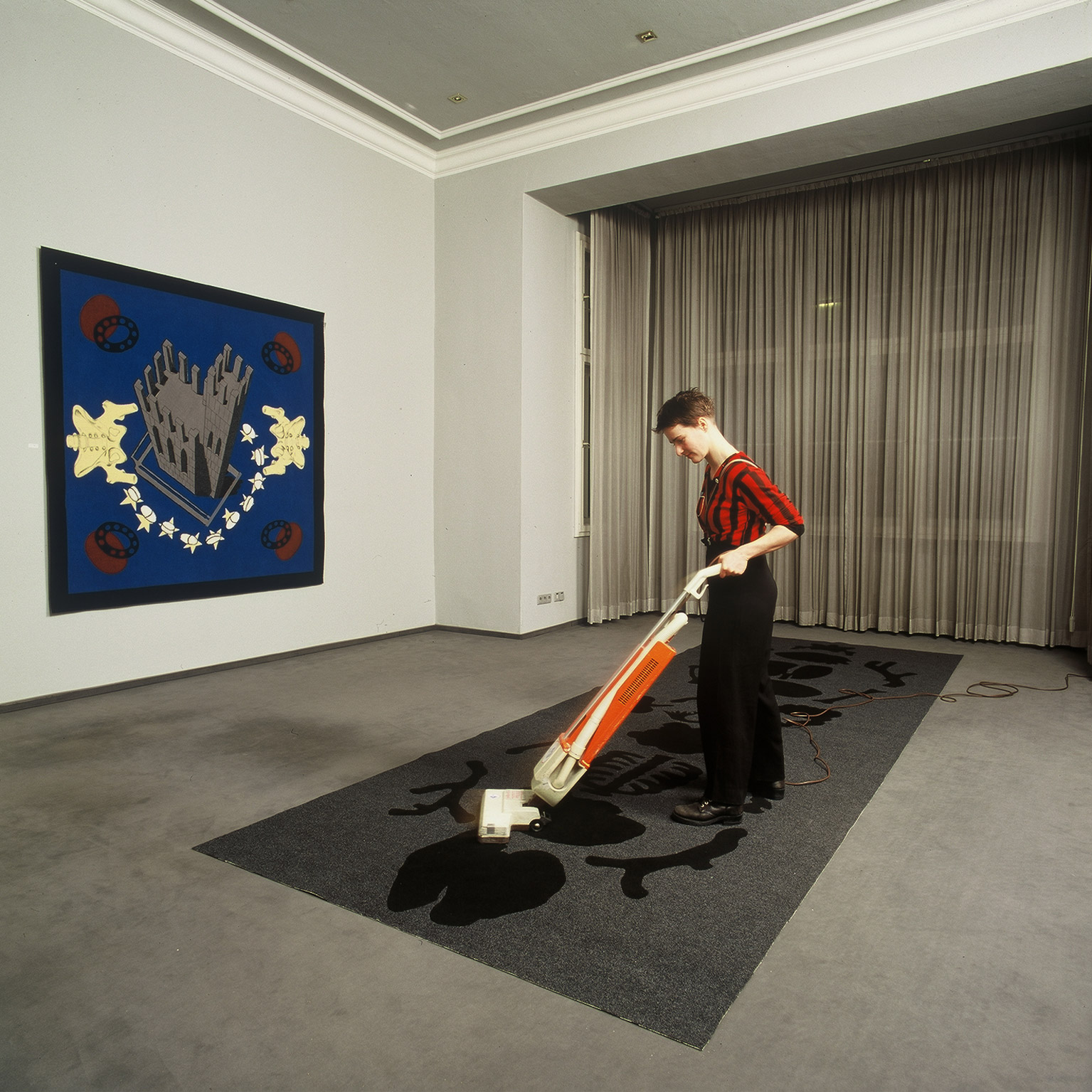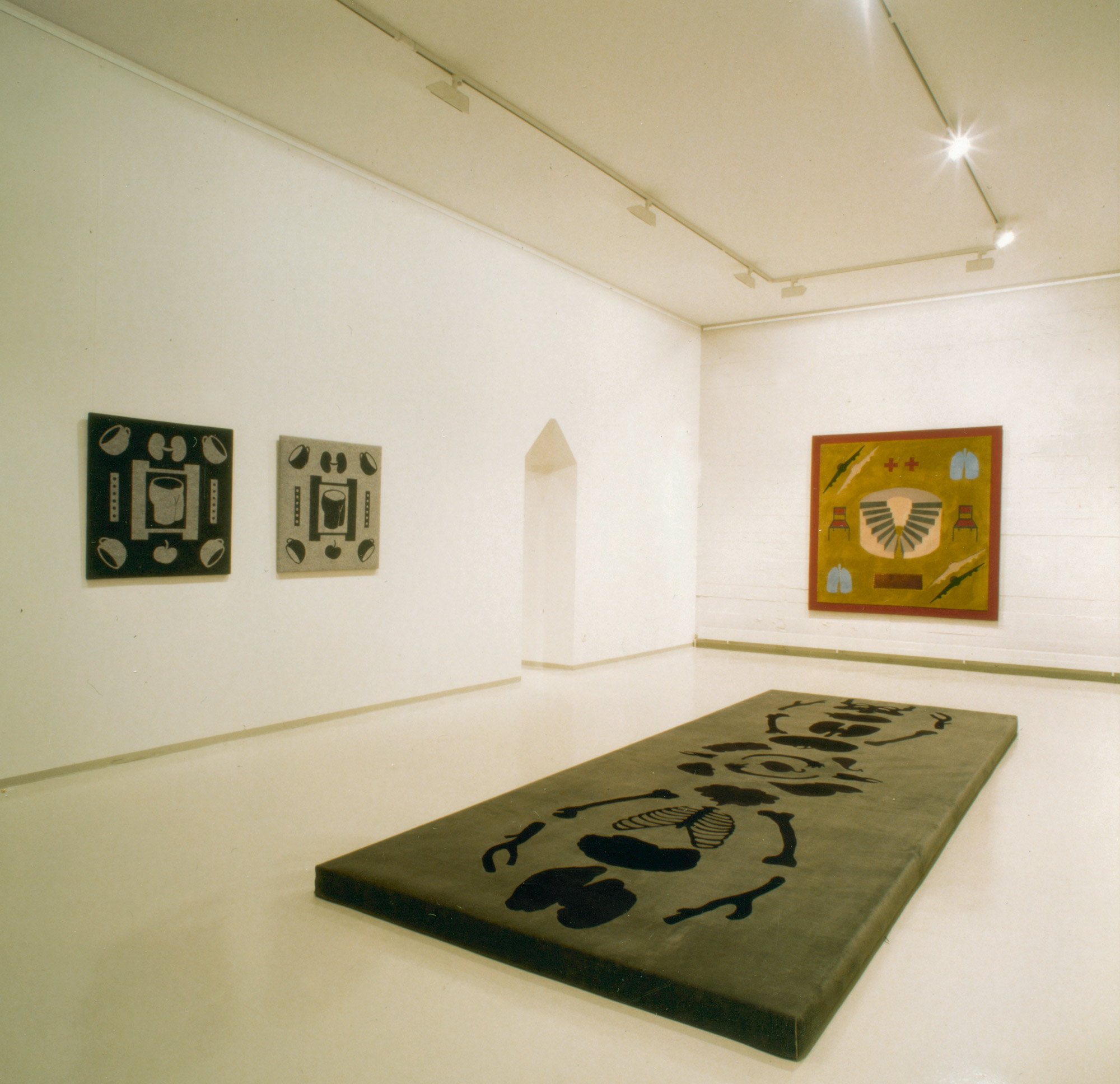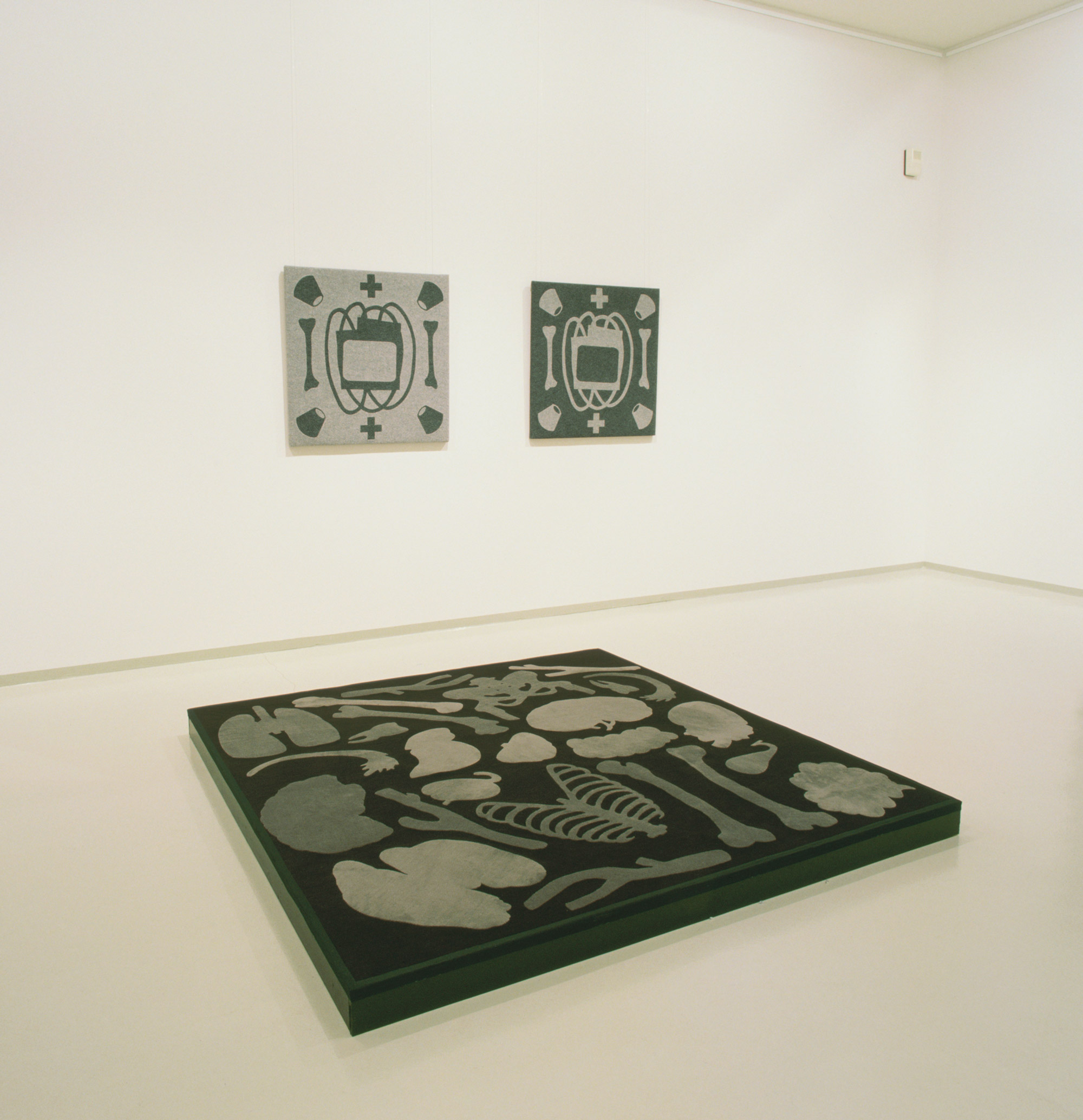Systems, patterns, symbols, resolutions and their contents
2 years after graduating in painting, I swapped the brush for the cutter knife, the canvas and paint for carpet.
From then on, my approach to painting and my methods changed fundamentally.
From 1993 onwards, I worked on developing a catalogue of drawings, which from then on flowed into my ‘carpet paintings’. Drawing on this iconology, I created a cycle of 2m x 2m carpet pictures, which, in a kind of inlay process, depicted the forms and signs in seemingly legible formulae and situational treatises.
In terms of content, these pictures dealt with everyday problems taken from the media, as well as social and political events. The bomb carpets and organ bridges were created at the time of the Gulf War. I was also interested in the quasi-formulaic depictions of the ‘structures’ of a dialogue. In carpets such as ‘Gesprächs-Ventilator’, ‘TV- Abend zu zweit’, Sendeschluss and the installation ‘talk-talk’ I dealt with the subject of communication.
The catalogue of drawings has continuously grown into a content-coded lexicon of forms, with which I cut, glue, install and draw my pictorial content in a freely associative and playful way.
The repeatedly shown chair, the light bulbs, bombs and weapons in the actual warlike sense, as well as in the translated sense, as aggressive and delimiting behaviour within our social interaction, e.g. a conversation, are formal components of my pictorial content.
The forms are based on something archetypal, metaphorical or allegorical, the meanings of which remain partly unnamable or vague. The play of allusions, confusion or unsettling assertions runs like a red thread through my entire artistic oeuvre. Photography, drawings, collages or objects, installations constantly have the component of a language-image transformation.

